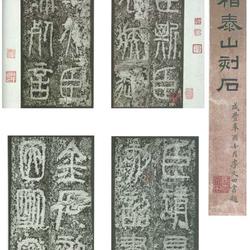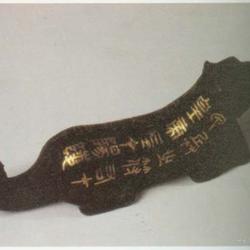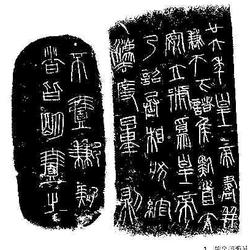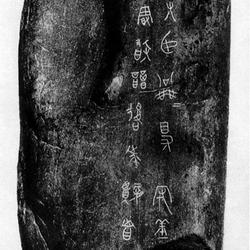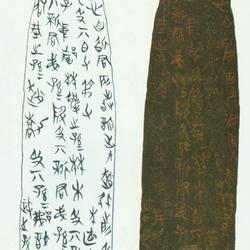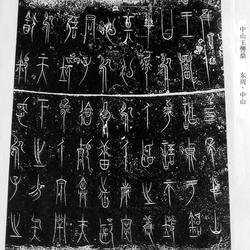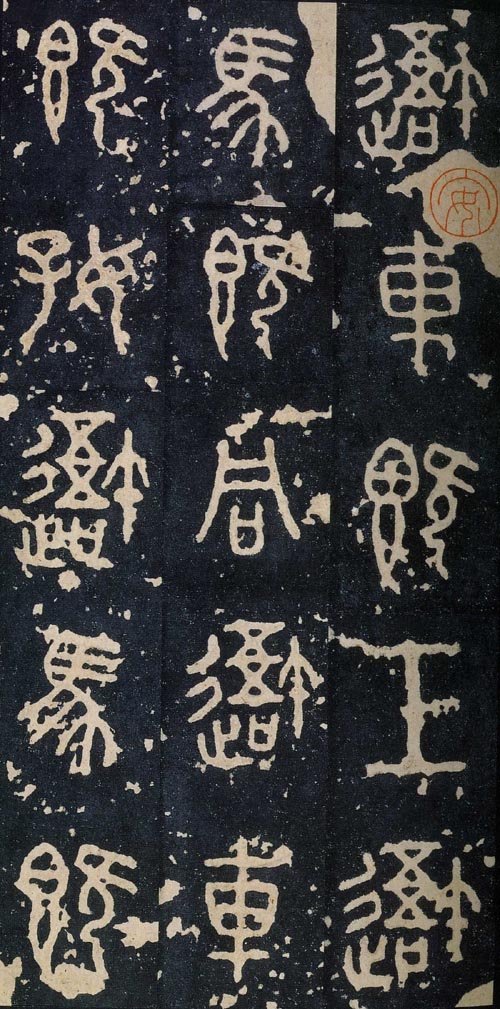
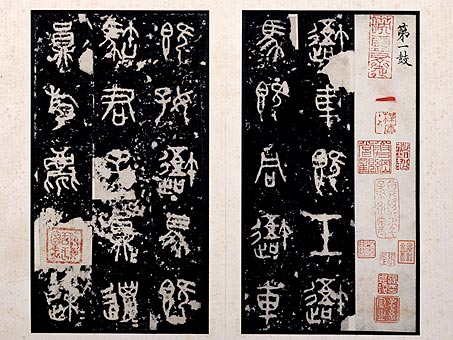
Ming Dynasty rubbings collected by the Palace Museum
(to be added)
The collection of the Palace Museum is a rubbing from the Ming Dynasty. It was originally collected by Sun Kehong and later belonged to Zhu Yizhen. After Zhu's death, his family donated it to the Palace Museum in accordance with his will.
The rubbings of this "Shigu Wen" volume are made with dense ink and are mounted on hemp paper. Each half has a length of 28.4cm and a width of 15.5cm, a total of 18 halves, each with 6 lines and 5 characters. The eighth drum is missing, and only one or two characters remain in each line of the fifth, seventh, and tenth drums. The rubbings include 16 sections of postscripts by Weng Fanggang, Wu Yun, Cai Wenbi and others. There are 130 collection seals including "Weng Fanggang tasted the view", "Wu Yunpingzhai once read", "Wang Guangzhi", "Huang Heting obtained after the age of 47" and other collection seals. There are red fonts in front of each drum in the rubbings, which are written by Sun Kehong according to Weng Fanggang's postscript. There are two attachments to the rubbings: the first is the rubbings of "Shigu Wen Yin Xun", a total of 20 pages, half width, 2 lines of 5 characters, Yin Xun 19 and a half pages, each page of 10 lines, 13 characters, until the Yuan Dynasty, Pan Dishu, Mao Liang Carved stone, with 2 seals; the second is ink ink "Zhou Boqi came to the stone drum", a total of 13 pages, each page has 6 lines of 5 characters, and there is an unmarked small regular script inscription on the front page, with seals of "Zhou Lang" and "Anyuan Zhongyin" "Waiting for 26 squares of printing.
In this version of "Qianyan", the characters "li", "huangbo", "dixian" and other characters on the drum are not damaged. Most of the characters "yi" still exist. live. It was approved by Mr. Tang Lan and Ma Ziyun and was developed in the early Ming Dynasty.
"Shigu Wen" is written in large seal script, with unique physical features and ancient, lush and simple calligraphy. Zhang Huaiguan of the Tang Dynasty wrote in his "Book Break": "The body shape is extraordinary, different from the past and present, with falling pearls and jade, and fluttering tassels."
There are many rubbings, among which the "Tianyi Pavilion Edition" inscribed by Ruan Yuan, Zhang Yanchang and others is the best.
At this time, in the Song Dynasty, Ouyang Xiu's "Collection of Ancient Records and Postscripts", Dong Kui's "Guangchuan Book and Postscripts", Chen Si's "Bao Carving Series", Ming Yang Shen's "Inscriptions on Gold and Stone", Qing Gu Yanwu's "Inscriptions on Gold and Stone", and Zhang Yansheng's "Rare Books and Steles". It is recorded in books such as "Records on Tablets and Inscriptions" by Yang Zhenfang. Guo Moruo has "Research on Stone Drum Inscriptions".

